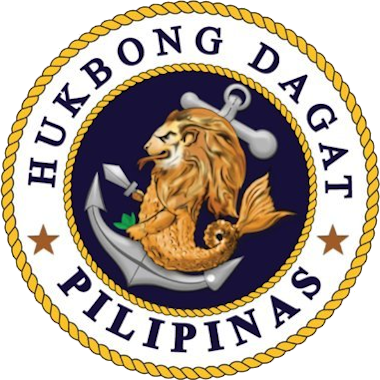The Philippine Navy (PN) plays a crucial role in safeguarding the archipelago’s vast maritime interests. From patrolling its extensive coastlines to participating in international security initiatives, the PN’s responsibilities are diverse and demanding. This blog post aims to provide a comprehensive overview of the Philippine Navy, exploring its history, current capabilities, challenges, and future prospects. We’ll delve into its organizational structure, the types of vessels and equipment it utilizes, and the vital role it plays in national security and regional stability. Understanding the complexities of the PN is essential for appreciating its contribution to the Philippines and the broader maritime landscape.
A Journey Through Time: The History of the Philippine Navy
The roots of the Philippine Navy can be traced back to the pre-colonial era, where indigenous communities already possessed sophisticated maritime traditions and seafaring skills. However, the modern Philippine Navy’s formal establishment is linked to the Philippine Revolution against Spanish colonial rule. During this pivotal period, Filipino revolutionaries utilized naval assets to challenge Spanish forces, demonstrating the strategic importance of maritime power. Following the declaration of Philippine independence, the nascent Philippine Navy faced the daunting task of securing the newly established republic’s territorial waters. Throughout its history, the PN has undergone numerous transformations, adapting to evolving geopolitical realities and technological advancements. This historical context provides valuable insight into the PN’s present structure and operational doctrines.
From Humble Beginnings to Modernization Efforts
The early years of the Philippine Navy were marked by limited resources and a focus on coastal defense. The challenges of nation-building and post-colonial reconstruction meant that naval development often took a backseat to other priorities. Despite these constraints, the PN played a crucial role in protecting the country’s maritime boundaries and combating smuggling activities. The Cold War era saw increased focus on external threats, prompting the PN to strengthen its capabilities and establish alliances with international partners. In recent decades, the PN has embarked on a modernization program to address emerging security challenges, including territorial disputes and transnational crime. This ongoing modernization effort aims to equip the PN with the necessary assets and technology to effectively fulfill its mandate.
The Structure and Organization of the Philippine Navy
The Philippine Navy is one of the three branches of the Armed Forces of the Philippines (AFP), alongside the Army and the Air Force. It is headed by the Flag Officer in Command (FOIC), who is responsible for the overall administration and operation of the PN. The PN’s organizational structure is designed to facilitate effective command and control, with various units and commands responsible for specific areas of operation. These include the Naval Forces West, responsible for the western seaboard, and the Naval Forces East, responsible for the eastern seaboard. The PN also has specialized units dedicated to maritime security, special operations, and logistics. This structured approach ensures that the PN can effectively manage its diverse responsibilities.
Key Commands and Responsibilities
The Philippine Navy’s structure is designed to address the archipelago’s unique maritime challenges. The different commands work in concert to protect the nation’s vast waters. The Maritime Systems Command, for example, is responsible for the acquisition, maintenance, and sustainment of naval assets. The Philippine Marine Corps, a vital component of the PN, is tasked with amphibious operations and territorial defense. Understanding the roles of these different commands provides a clearer picture of the PN’s overall operational capability.
Assets and Capabilities: A Look at the Fleet
The Philippine Navy’s fleet comprises a variety of vessels, ranging from frigates and destroyers to patrol boats and landing craft. While the PN has made strides in modernizing its fleet, it still faces challenges in terms of overall numbers and capabilities compared to some of its regional neighbors. The acquisition of new vessels and the upgrading of existing ones are key priorities for the PN’s modernization efforts. These acquisitions aim to enhance the PN’s ability to conduct patrols, protect maritime resources, and respond to contingencies. The table below illustrates some of the key classes of vessels currently in service with the Philippine Navy.
| Vessel Class | Type | Primary Role | Source |
|---|---|---|---|
| Gregorio del Pilar-class | Frigate | Anti-submarine warfare, surface warfare | US Coast Guard transfer |
| Jose Rizal-class | Frigate | Anti-air warfare, anti-surface warfare | Newly acquired |
| Ham Class | Patrol Boat | Coastal patrol, maritime security | Locally built |
Modernization Efforts and Future Acquisitions
The Philippine Navy is actively pursuing modernization projects to bolster its capabilities. These projects include the acquisition of new multi-role frigates, offshore patrol vessels, and other assets. The focus is on enhancing the PN’s ability to conduct a wider range of missions, including anti-air warfare, anti-submarine warfare, and electronic warfare. The modernization efforts also emphasize improving the PN’s command and control systems, as well as its intelligence, surveillance, and reconnaissance (ISR) capabilities. These improvements are essential for ensuring the PN can effectively address current and future security challenges.
The Role of the Philippine Navy: Defending Sovereignty and Promoting Stability
The Philippine Navy’s primary mission is to defend the sovereignty and territorial integrity of the Philippines. This includes protecting the country’s maritime boundaries, deterring aggression, and safeguarding its maritime resources. The PN also plays a vital role in maintaining maritime security, combating piracy, smuggling, and other transnational crimes. Furthermore, the PN participates in international cooperation efforts, working with other navies to promote regional stability and address shared security challenges. The PN’s contributions extend beyond national defense, encompassing humanitarian assistance and disaster relief operations.
Protecting Maritime Resources and Combating Illegal Activities
The Philippines’ vast maritime domain is rich in resources, including fisheries and mineral deposits. The PN plays a crucial role in protecting these resources from illegal exploitation and ensuring sustainable development. This involves conducting regular patrols, enforcing maritime laws, and working with other agencies to combat illegal fishing and other illicit activities. The PN’s efforts to protect maritime resources are essential for the country’s economic security and environmental sustainability.
Challenges and Opportunities Facing the Philippine Navy
The Philippine Navy faces numerous challenges in fulfilling its mandate. These include limited resources, the need for further modernization, and the complex geopolitical environment in the region. The South China Sea disputes, in particular, pose a significant challenge to the PN, requiring it to maintain a strong presence in contested waters. Despite these challenges, the PN also has opportunities to enhance its capabilities through international partnerships, technological advancements, and continued modernization efforts. Addressing these challenges and capitalizing on these opportunities are crucial for the PN’s future success.
Resource Constraints and Modernization Imperatives
One of the most significant challenges facing the Philippine Navy is the limited availability of resources. The vastness of the Philippine archipelago and the complexity of its maritime environment require a significant investment in naval assets and personnel. The PN’s modernization efforts are aimed at addressing this resource gap, but sustained funding is essential to ensure their success. The need to balance modernization priorities with other national priorities presents a complex challenge for policymakers.
International Cooperation and Partnerships
The Philippine Navy actively engages in international cooperation with other navies to promote regional security and address shared challenges. This includes participating in joint exercises, exchanging information, and collaborating on maritime security operations. These partnerships are essential for enhancing the PN’s capabilities, improving interoperability, and fostering trust and understanding among regional stakeholders. The PN’s participation in international forums and initiatives also contributes to its professional development and strengthens its role in the international maritime community.
Joint Exercises and Information Sharing
The Philippine Navy regularly participates in joint exercises with other navies, including those of the United States, Japan, and Australia. These exercises provide valuable training opportunities and enhance interoperability between different naval forces. Information sharing is another crucial aspect of international cooperation, allowing the PN to stay informed about potential threats and coordinate its activities with other navies. These collaborative efforts are essential for maintaining maritime security and stability in the region.
The Future of the Philippine Navy: Vision and Prospects
The Philippine Navy’s future is shaped by its ongoing modernization efforts, evolving security challenges, and its commitment to international cooperation. The PN aims to become a modern and capable naval force, capable of effectively defending the country’s sovereignty and protecting its maritime interests. This vision requires sustained investment in naval assets, continuous improvement in training and doctrine, and active engagement in regional security initiatives. The PN’s future success will depend on its ability to adapt to changing circumstances, leverage technological advancements, and strengthen its partnerships with other navies.
Long-Term Development Plans and Strategic Goals
The Philippine Navy has outlined long-term development plans that focus on acquiring new assets, upgrading existing ones, and improving its overall capabilities. These plans are aligned with the country’s national security strategy and aim to address the evolving maritime challenges in the region. The PN’s strategic goals include enhancing its ability to conduct maritime patrols, protect maritime resources, and respond to contingencies. Achieving these goals will require sustained commitment and investment over the long term.
Conclusion: A Vital Force for the Philippines
The Philippine Navy plays a crucial role in safeguarding the Philippines’ maritime interests and contributing to regional stability. From its humble beginnings to its ongoing modernization efforts, the PN has consistently demonstrated its commitment to serving the nation. While challenges remain, the PN’s future is bright, with continued investment, international cooperation, and a clear vision for its development. The Philippine Navy stands as a vital force, navigating the seas and protecting the nation’s shores.
*Disclaimer: This blog post provides a general overview of the Philippine Navy based on publicly available information




